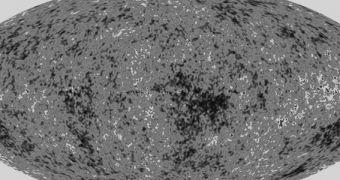Scientists browsing recently through some the documents written by Albert Einstein discovered that the famous physicist once dabbled with the idea of a steady-state Universe, unsatisfied with some of the tenets that stemmed from the Big Bang theory that is currently accepted as the best available interpretation for the formation of the Cosmos.
The document was discovered at the Albert Einstein Archives in Jerusalem. Experts who have had a chance to look at it say that it was most likely authored during a trip the physicist took to California in 1931. Until now, the paper has remained hidden in plain sight, and it was only discovered by accident.
The solid-state theory he was investigating held that the Universe expands steadily and eternally. The main proponent of this idea was British astrophysicist Fred Hoyle, who proposed his own hypotheses some two decades later, in the early 1950s. The recently-found document highlights Einstein's hesitance to accept the idea that the Universe was formed in a single giant event, the Big Bang.
The work carried out by renowned US astronomer Edwin Hubble had demonstrated as far back as the 1920s that space is expanding and that galaxies are moving away from each other. Due to better technology, we now know that the expansion is accelerating, by a factor called Hubble's constant.
However, this knowledge was unavailable to Einstein in the early 1930s. The steady-state Universe theory therefore proposed that space is expanding eternally, but at a constant density. According to the manuscript, this could have happened as new matter popped into existence throughout the Cosmos.
The newly-emerged particles would then coalesce to form stars and galaxies, offsetting the dropping density of the Cosmos caused by expansion. In this sense, the Universe would always be infinite, and its size would not change as it expanded, hence the name steady state.
“For the density to remain constant new particles of matter must be continually formed,” Einstein wrote 20 years ahead of Hoyle. The document was uncovered by physicist Cormac O’Raifeartaigh, from the Waterford Institute of Technology in Ireland, Nature News reports.
University of Cambridge science historian Simon Mitton, who in 2005 wrote Hoyle's biography, comments that the discovery of this manuscript confirms that the physicist was not a “crank.” He argues that Hoyle could have used the knowledge that Einstein too dabbled with the steady-state theory when he engaged the international scientific community on this issue, in the 1950s.
What this model brought to the table was mathematical consistency, as well as a new way of tweaking Einstein's equations from the theory of general relativity to allow for the spontaneous generation of matter throughout the Universe.
Princeton University cosmologist James Peebles said after learning about the new document that the manuscript was “a rough draft commenced with excitement over a neat idea and soon abandoned as the author realized he was fooling himself.” There are currently no available records to suggest that the famous physicist ever mentioned this hypothesis, or these calculations, ever again.
Einstein's displeasure with the Big Bang model can be traced back to the earliest days when other theoreticians demonstrated that such an event was the logical conclusion to be derived from the theory of general relativity. The German physicist always found this idea “abominable,” hence his interest in coming up with alternative evidence.
“What the manuscript shows is that although by then he accepted the expansion of space, [Einstein] was unhappy with a Universe changing in time,” concludes Aarhus University science historian, Helge Kragh.

 14 DAY TRIAL //
14 DAY TRIAL //